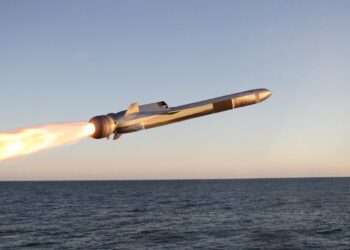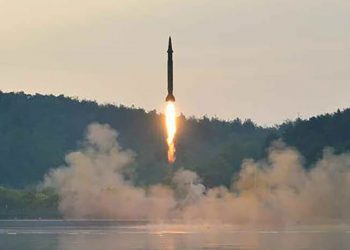MOSCOW: Thirty years ago, on May 15, 1978, a missile defense system was placed on combat duty to protect Moscow as the capital city of the Soviet Union.
Russia has been developing missile defense systems since the early 1960s.
On March 1, 1961, the Soviet Air-Defense Force conducted the first hit-to-kill test when a V-1000 missile interceptor developed by the Fakel (Torch) design bureau under the supervision of Pyotr Grushin, a member of the Soviet Academy of Sciences, successfully destroyed the warhead of an R-12 inter-continental ballistic missile (ICBM) launched from the Kapustin Yar space center in the Volga Region.
Several R-5 medium-range ballistic missiles were destroyed during subsequent tests.
The United States was able to conduct similar tests only 23 years later.
In 1961-1971, Soviet experts developed the experimental A-35 missile-defense system around Moscow. The system became operational in June 1971 and protected the Soviet capital and surrounding industrial areas.
At that time, the United States, which lacked similar systems, was compelled to negotiate with the Soviet Union. In 1972, Moscow and Washington signed the Anti-Ballistic Missile (ABM) Treaty that served as the main element of mutual nuclear parity for several decades.
Under the treaty both sides agreed that each could only have two ABM deployment areas that were heavily regulated and placed so that they could not provide a nationwide ABM defense or become the basis for developing one. Each country thus left unchallenged the penetrating capability of the other's retaliatory missile forces. Both parties agreed to limit the quantitative improvement of their ABM technology.
In 1974, both countries signed a protocol to the treaty which entered into force in 1976 and reduced the number of ABM deployment areas to one, either around either side's national capital area, or as a single ICBM deployment area.
The United States elected not to deploy an ABM system and in 1976 deactivated its ineffective site at Grand Forks, North Dakota, around a Minuteman ICBM launch area.
Although the 1971 Soviet ABM system became obsolete even before it was commissioned, the ABM Treaty allowed Moscow to upgrade it. On May 15, 1978, the more advanced A-35M system was placed on active duty around Moscow.
However, the United States subsequently embarked on an ambitious multiple independent reentry vehicle (MIRV) program which nullified the Soviet system's capabilities.
Russia's A-135 ABM system capable of coping with MIRVed ICBMs was developed and commissioned in 1995 and 1996, respectively. The system hinged on the Don-2N multi-role radar and a command computer inside a truncated tetrahedral pyramid. Silo-based missile interceptors were deployed along the A-108 highway, also known as the Greater Moscow Belt Highway, in the Moscow, Kaluga and Yaroslavl Regions.
The missile-defense system around Moscow had to be constantly upgraded in order to deal with new threats. Unfortunately, federal allocations were not enough to ensure its combat readiness.
The situation became particularly serious in the late 1990s when ABM allocations accounted for just 1% of those made in the 1980s.
Moscow feared that it might lose the scientific and technical ABM potential accumulated since the late 1950s. The situation improved only in recent years. Under the national rearmament program until 2010, approved by former President Vladimir Putin, minimal R&D levels in this sphere will be reinstated.
The Russian rearmament program was adopted in response to new U.S. missile-defense plans stipulating the deployment of space-based attack weapons. Washington may decide to return to the Brilliant Pebbles project, a non-nuclear system of satellite-based, watermelon-sized mini-missiles designed to use a high-velocity kinetic warhead under the Strategic Defense Initiative (SDI) program.
At any rate, Washington rejects all Russian and Chinese initiatives aimed at preventing the militarization of outer space.
It would be appropriate to recall that the Reagan Administration spent $3.4 billion a year on ABM defenses; such allocations totaled over $5 billion under George H. W. Bush and Bill Clinton; President George W. Bush persuaded Congress to allocate $8 billion per year.
Many military analysts believe that both sides should agree on specific parameters for assessing the mutual strategic nuclear and missile-defense balance. Increases in one area will require reductions in others. However, Washington will never agree with this fair approach because it runs counter to its military doctrine aimed at ensuring undisputed U.S. military-technical superiority.
Nor should Russia become involved in another ABM race because it cannot afford to develop and deploy a national missile-defense system reliably protecting a huge territory of our country at present or in the foreseeable future.
Instead, Moscow should opt for an asymmetrical response and develop weapons capable of breaching missile defense systems.
Yury Zaitsev is an academic adviser at the Russian Academy of Engineering Sciences.
The opinions expressed in this article are the author's and do not necessarily represent those of RIA Novosti.









